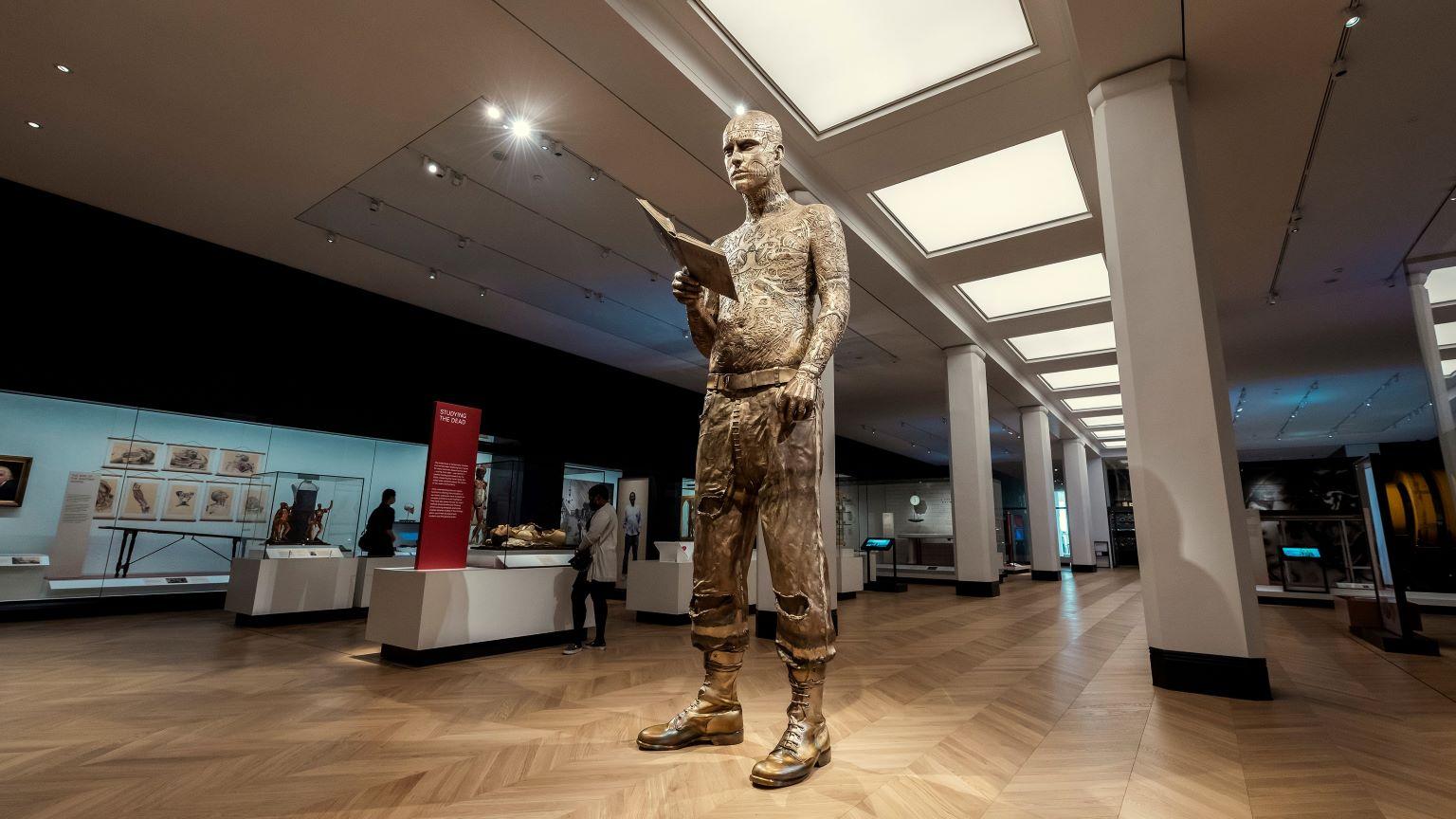Winners' tales: How art meets science at the Science Museum

As we hear from our five Art Fund Museum of the Year winners about their innovative work, this week the Science Museum's curator of art collections Katy Barrett tells us how works of art play a pivotal role in the museum's new medicine galleries.
At the Science Museum we are thrilled to have been announced joint winner of Art Fund Museum of the Year 2020, alongside Aberdeen Art Gallery, Gairloch Museum, Towner Eastbourne and South London Gallery.
We will use our prize money to provide special outreach sessions to local school children from communities that aren’t currently able to visit the Science Museum, enabling us to further our mission to inspire futures.
As we reflect on what it means to be a winner, we look back on how giving a pivotal role to art in our new Medicine: The Wellcome Galleries has played a role in us receiving this award.
Marc Quinn's Self-conscious Gene and Siân Davey's portraits
In 2019 we opened the largest medical galleries in the world – Medicine: The Wellcome Galleries. Woven throughout are specially commissioned artworks that explore our relationship with medicine and health.
On entering the galleries visitors are greeted by a 3.5-metre monumental bronze statue of the late Canadian artist, actor and model Rick Genest (also known as Zombie Boy). Called ‘Self-conscious Gene’, it was conceived for the galleries by leading British artist Marc Quinn.
Quinn’s sculptures, paintings and drawings explore the relationships between art and science, man and nature, and the human body and the perception of beauty. He was inspired to create the sculpture after becoming aware of Genest’s personal experiences of illness and the all-body anatomical tattoos that he commissioned in response. Genest is shown holding an anatomy textbook, tying the sculpture to the books and waxworks on display in the Medicine and Bodies gallery and connecting our experiences of medicine to the street culture exemplified by Genest.
Also on display in the Medicine and Bodies gallery is a series of portraits by award-winning photographer Siân Davey, exploring what it means to people when they and their bodies ‘fall outside the norm’.
Individuals involved with the participation project When medicine defines what’s ‘normal’ worked with Davey to capture their experiences of medicine, providing a personal context to the medical innovations displayed in the galleries. We meet a series of life-size portraits alongside recorded interviews that make the diverse experiences of people living today central to the galleries.
Davey also produced portraits of individuals who receive or give medical care for the Medicine and Treatments gallery, a space which examines how we care for the health of the individual through surgery, drugs or different therapies. Her portraits illuminate the human side of treatment and illness.
Studio Roso's Bloom
A mesmerising kinetic piece by Studio Roso hangs from the ceiling of the neighbouring Medicine and Communities gallery.
Titled Bloom, it echoes the detailed and beautiful diagrams used to visualise the circulation of infectious disease. Particularly relevant in 2020, Bloom plays on the notion of air being the carrier and the ‘active’ part in an epidemic system, evoking the movement of a disease as it passes through the air. Intended to visualise an abstract medical process, this year perhaps it now provides a reflective space to meditate on the power of disease.
Eleanor Crook's Santa Medicina
In the contemplative Faith, Hope and Fear gallery visitors encounter Eleanor Crook’s artwork Santa Medicina, a beautiful bronze sculpture of a figure that is both surgeon and saint.
When designing Santa Medicina’s rich surgical gown, Crook included medical symbols that held personal meaning for the team who worked on the sculpture and the galleries. From a wax model of twins in the womb, chosen by Keeper of Medicine Natasha McEnroe for her children, to an orthodontic retainer brace chosen by me, the sculpture makes the clinical personal in a gallery that prompts visitors to consider the emotional impact of medical treatment and care.
Across the galleries these incredible works show how the interplay between art and science can be key to understanding the world around us and put imagery at the heart of our medical story. The role of the rich and varied communities that we serve was a crucial component in our development of these galleries and it’s wonderful that this has been recognised by Art Fund.
The Science Museum is a winner of Art Fund Museum of the Year 2020. Learn more about our five brilliant winners.